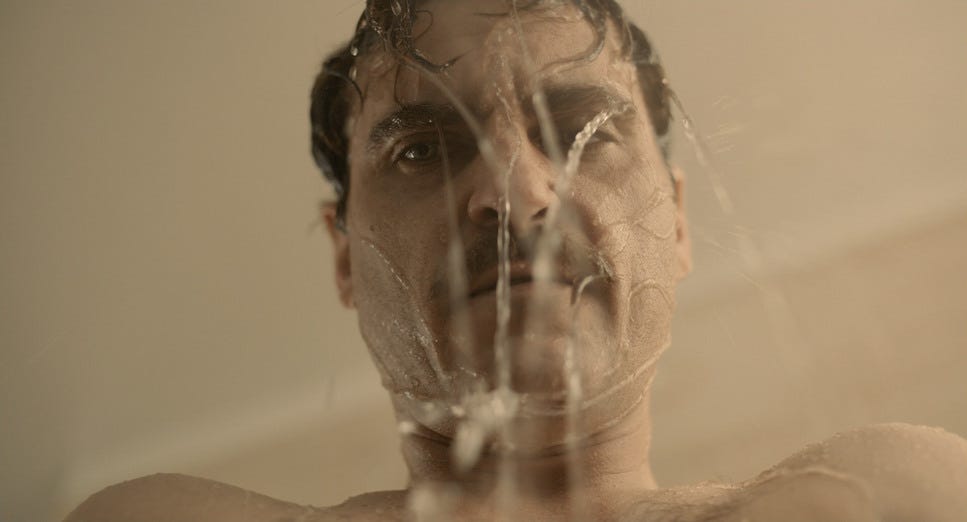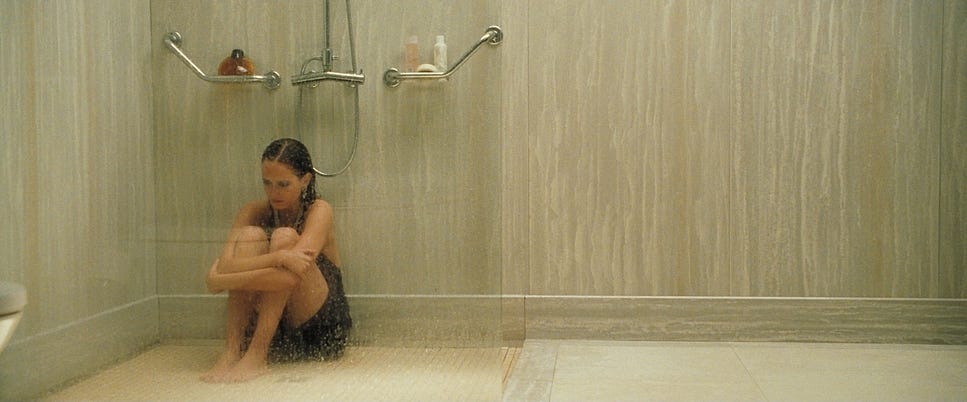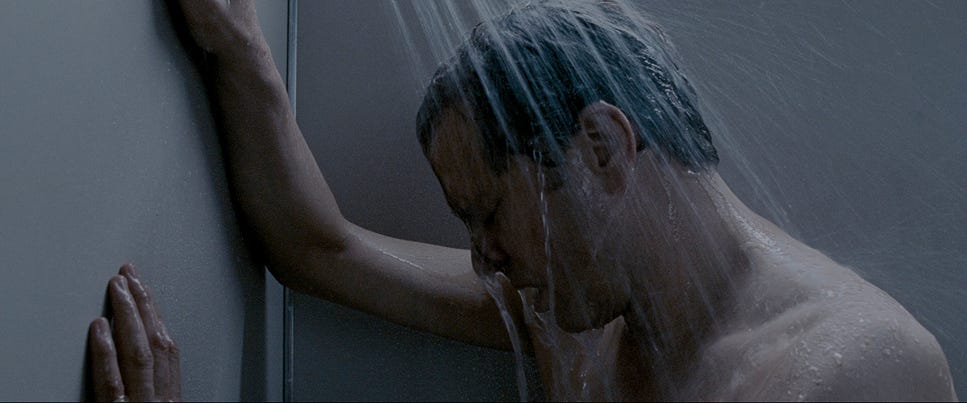🎬 #188 Showering & Throwing up.
This style of post seems to be enjoyed by people, and I’m really enjoying writing ones that aren’t in the strict format of the newsletter in the past. This week’s is a look at two actions in cinema that have taken on a meaning of their own. They’re shorthand for different kinds of emotions (usually not happy ones), and for whatever reason, they are the go-to cinematic language to show very specific feelings in a scene or from a character. Hope you enjoy, and have a wonderful weekend.
Bry
The whole trick of a film is to make what’s internal, external. To give feelings and emotions a visual form. So that filmmakers don’t have to explain with dialogue what the character is thinking or feeling. In fact, the basic advice in filmmaking is never have your character reveal what they’re thinking or feeling in dialogue. Show it and actually have them say the opposite of what they’re feeling. So it’s no surprise that difficult emotions like deep internal conflict, and those contained within an impending existential crisis, that are difficult to articulate visually, have ended up having a short hand develop and take hold to the point where it’s almost expected. Even though showers in real life are a peaceful and enjoyable process, where you might even have pleasant thoughts and good ideas, in cinematic form, showers are a place for deep conflict, struggle, and a form of metaphorical cleansing after doing something terrible or causing harm in some physical or emotional way. People are looking to be cleansed of what they’ve done, healed, but they can never be cleansed of what they’ve really done or been through. This scene usually comes after a peak emotional experience, and this is the trough. This is the dopamine collapse after the big emotional event. Where they’re left to look at themselves metaphorically going down the drain and confront hard truths about their situation in their own watery glass cubicle.
The second cinematic shorthand isn’t sickness in the sense of a character being ill because of a virus or flu or anything that might make them traditionally sick. No, this shorthand is reserved for characters dealing with the strongest emotions, the most upsetting ones. They’ve experienced something so deeply wretched that it’s actually made them physically ill. Whether that be deep anxiety, nervousness, or they’ve done something that they never thought they would do. They’ve betrayed the very essence of their character and that has brought them to their knees, physically and metaphorically.
One of the strongest recent examples of this is in Jonathan Glazer’s, The Zone of Interest, when the usually icy commander is suddenly enveloped by nausea at the mere consideration of what he’s been responsible for. It’s used a lot in cinema, and it’s always effective, because we as an audience can identify with that feeling. It makes us realise how strong their emotions were to make them feel that badly. It literally makes the internal, external.
And both these moments occur in two films that you should seek out this week:
Katherine Bigelow’s, A House of Dynamite
Edward Berg’s Ballad of a Small Player
Both great and both from Netflix.





